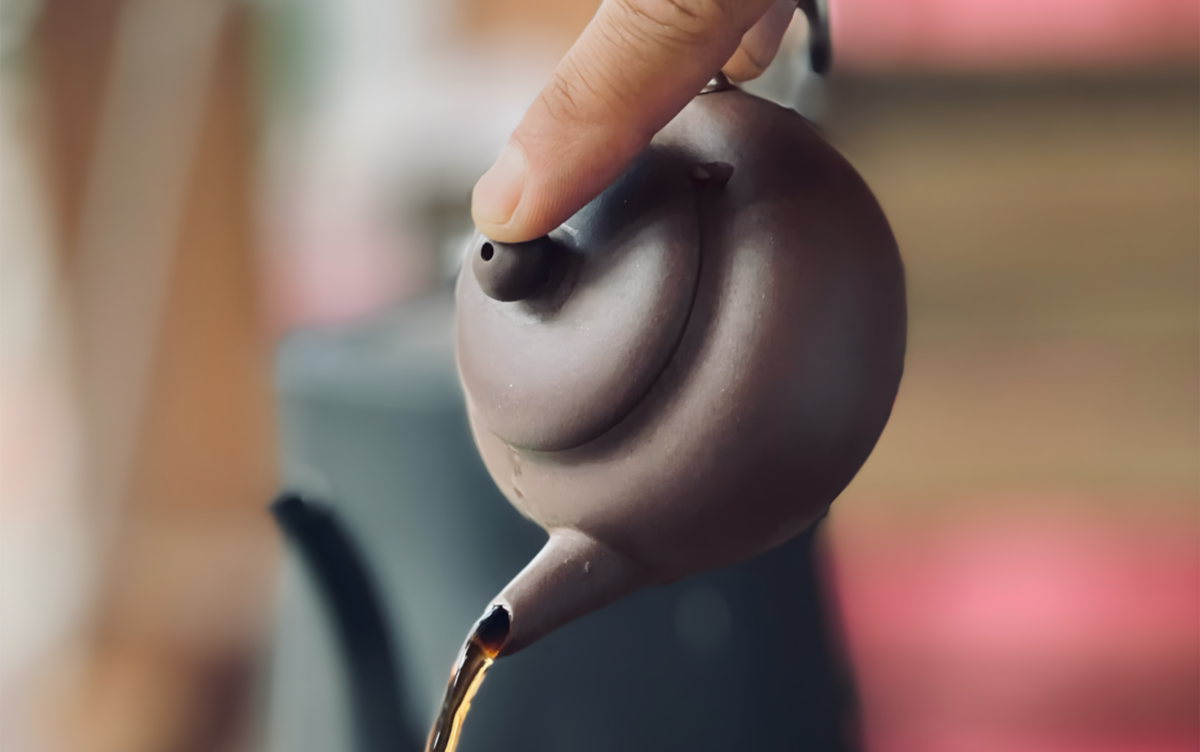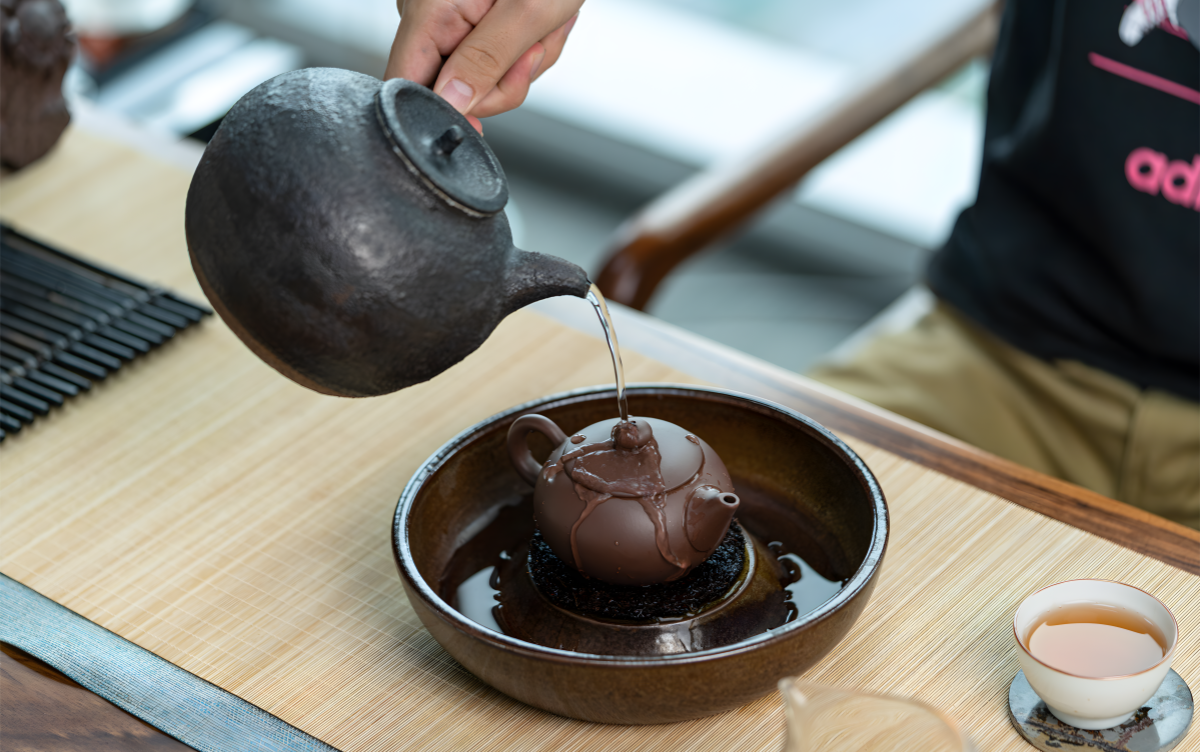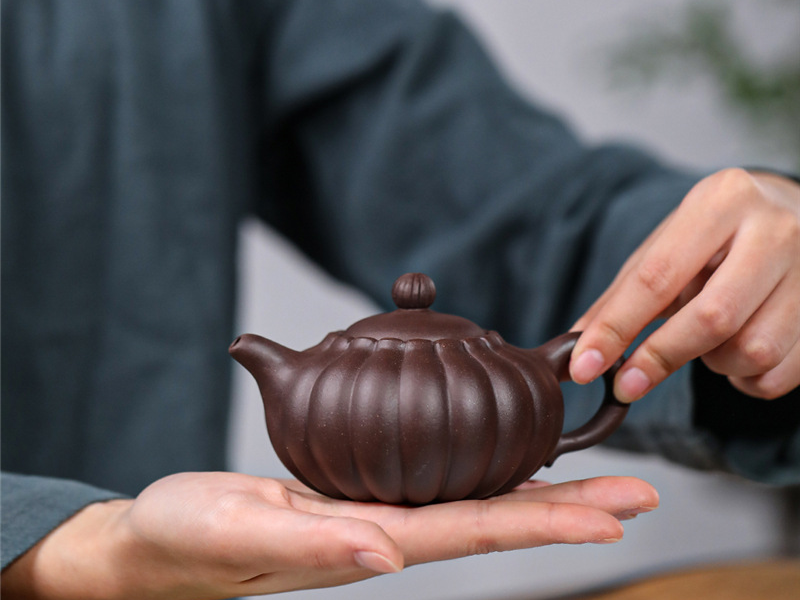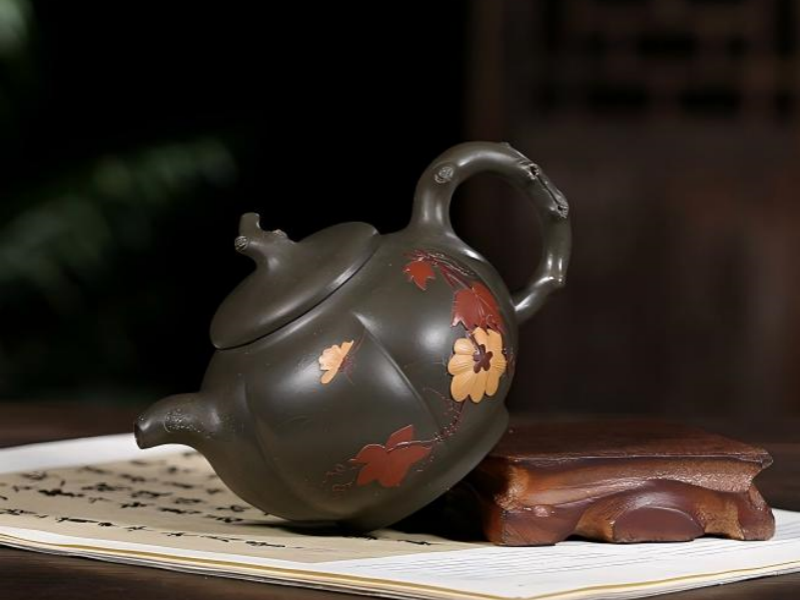Cultural Symbolism in China Teapot Art: Patterns and Motifs
Introduction to Chinese Teapot Art
Steep a pot of tea in China, and you’re not just brewing a beverage—you’re stirring centuries of tradition, artistry, and profound meaning. The story of China teapot art stretches back over a thousand years, tracing a path from ancient kilns to modern collectors’ shelves. Every curve, handle, and painted surface is more than just functional—it’s a canvas for cultural symbolism. In China, teapots aren’t merely vessels for tea; they’re storytellers. Their designs, shapes, and decorations capture beliefs, values, and hopes, transforming each pot into a window on the world of Chinese thought.
The tradition of teapots is deeply rooted in Chinese history—and it’s a long one. By the Ming Dynasty (1368–1644), the famous purple clay Yixing teapots had appeared, renowned and beloved for their unusual porous clay material and unglazed surfaces. At the same time, look to Jingdezhen for porcelain teapots, adorned with blue-and-white patterns and delicate, graceful designs. What makes a Chinese teapot distinctly Chinese? It’s not merely the technical aspects or the material. The Chinese are expert craftsmen with millennium of experience, but what makes a teapot Chinese goes beyond that. It’s the meaning behind it all. In Chinese culture, patterns and motifs on a pot are not made by whim; rather, they are created purposefully in order to evoke ideas of prosperity, happiness, longevity, and more.
Why do symbols matter on teapots?
In Chinese culture nothing is ever just what it appears to be. A lotus is not (only) a flower, a dragon is much more than a mythical animal. These objects have layers of meaning, meaning that is often informed by an ancient system of philosophy, religious mythology, and a dose of humourous word play. When you pour from a teapot covered with dragons, phoenixes, blooming lotuses, you are taking part in a silent conversation with history. A conversation that has been shaped by the ambitions and aspirations of generations of people living in China.
Lightning Fact: China has over 1,000 teapot shapes, each shape has its own name and symbolic associations.
| Teapot Type | Origin | Notable Symbolism |
|---|---|---|
| Yixing Zisha | Jiangsu | Nature, simplicity, purity |
| Jingdezhen Porcelain | Jiangxi | Elegance, prosperity, immortality |
| Shiwan Ware | Guangdong | Folk tales, daily life, humor |
Data Source: Symbolic and regional information corroborated by the China National Tea Museum, Yixing Ceramics Museum, Jingdezhen Ceramic Institute, Shiwan Ceramic Museum, and academic research cataloged in China National Knowledge Infrastructure (CNKI) (http://www.teamuseum.cn/, http://www.yxbf.com.cn/, http://www.jci.edu.cn/, http://www.foshanmuseum.com/shiwan/, http://www.cnki.net/).
From the emperor’s court to the humblest village, teapots have long been cherished as gifts, collectibles, and heirlooms. Their enduring popularity proves that the cultural symbolism in China teapot art is not a relic of the past—it’s a living tradition, ready to be explored and appreciated by anyone who takes the time to look a little closer.
Understanding Symbolism in Chinese Art
Step into the world of Chinese art, and you’ll find yourself surrounded by a rich tapestry of symbols—each with stories to tell and hopes to share. Symbolism is the heart and soul of Chinese visual culture, and nowhere does it shine brighter than in the patterns and motifs of teapot art. In fact, it’s nearly impossible to separate art from meaning in traditional China. Every motif, whether animal, plant, or mythical creature, acts as a kind of visual shorthand, expressing wishes for good fortune, happiness, and longevity.
What is unique in symbolism in Chinese art?
Symbolism is the art of using a known image (a dragon, a lotus flower, a carp) to represent an abstract idea. A pair of fish is not a charming design only, but a blessing for abundance and marital happiness. It’s the fruit of a culture that has for long been in tune with the rhythms of nature, the path of the Dao and the connection of all relationships. Patterns and motifs found on Chinese teapots are blessings in clay, quietly offering protection, success or beauty with each brew of tea.
Chinese artists have long employed motifs to tell stories that can’t be rendered merely in words. Take the dragon. While in the West the dragon is often seen as a fearsome or even evil creature, in China the dragon is a noble animal, a symbol of authority, power and auspicious natural energy. If you see a dragon on a teapot, its place on the vessel seems hardly coincidental. The implicit story—an emperor over the cosmos, and the life-giving energy of all things—served the object well.

An interesting aspect of symbolism in China is the visual nature of a language dependent upon homophones or homonyms. For example, the word for “bat” 蝠 (fú) is identical to the word for “good fortune” 福 (fú). Thus, bats decorate the surfaces of teapots to call for good fortune. The word play in symbolism is smartly woven into all types of art, making every teapot a coded riddle, brimming with humor and meaning.
“A picture is a poem without words.” –Confucius
Chinese teapot art is often filled with careful and thoughtful designs, imbued with auspicious symbolic meanings. Like in any piece of art, there is more to these motifs than meets the eye. By learning how to decipher these symbols, it may lead you to a much deeper appreciation for tea art and culture!
Common Patterns and Motifs in China Teapot Art
While the beauty of Cultural Symbolism in China Teapot Art: Patterns and Motifs may be well reflected by richness of designs upon teapots, the meanings behind each of the motifs had a deep thoughtful choice as well. The significance behind these designs represent the long history and culture of the Chinese people. When certain motifs are hidden within the teapots, it symbolizes a beautiful meaning or desire. Let us review some of the most commonly used patterns and motifs to appreciate what they represent.
Animal motifs
Animal themes are some of the most striking and meaningful designs in the art of Chinese teapots. Here are some of the most popular animals and what they symbolize:

Plant motifs
Many commonly used teapot patterns are inspired by nature, and each plant is chosen for its own specific meaning:
| Motif | Meaning | Usage Example |
|---|---|---|
| Dragon | Power, protection, imperial authority | Yixing, Jingdezhen |
| Phoenix | Rebirth, grace, harmony | Porcelain teapots |
| Fish | Wealth, abundance, marital happiness | Wedding gifts |
| Lotus | Purity, enlightenment, harmony | Buddhist ceremonies |
| Bamboo | Flexibility, resilience, scholarly values | Scholar’s teaware |
| Plum Blossom | Hope, renewal, perseverance | New Year celebrations |
Data Source: Symbolism and usage of motifs corroborated by the China National Tea Museum, academic publications from the Jingdezhen Ceramic Institute, motif catalogues and exhibition guides from the Yixing Ceramics Museum, and scholarly research indexed by China National Knowledge Infrastructure (CNKI) (http://www.teamuseum.cn/, http://www.jci.edu.cn/, http://www.yxbf.com.cn/, http://www.cnki.net/).
Patterns and motifs aren’t just decorative; they’re communicative. Sometimes, you’ll see combinations—like a dragon and phoenix together, signaling harmony between masculine and feminine energies or between emperor and empress. Other times, the placement and repetition of motifs amplify their meaning. For example, five bats flying together represent the “Five Blessings”: longevity, wealth, health, virtue, and peaceful death.
Case Study: Yixing Zisha Teapots Many Yixing teapots feature Hand-carved bamboo or lotus motifs. Artisans often use the natural color of the clay to mimic these plants, blending form and meaning. The result? A teapot that’s not just functional, but a living piece of cultural poetry.
Put simply, whatever motif you see on a Chinese teapot, look deeper. Beneath the brushstrokes or the carvings is a living language, a way for artists and tea appreciators to communicate their hopes, dreams, and appreciation of the bounty of life.
How Patterns and Motifs Reflect Chinese Values
Looking at a Chinese teapot covered in intricate motifs, you’re not just seeing a work of beauty – you’re seeing the soul of Chinese culture. Cultural symbolism in China teapot art: patterns and motifs is about so much more than decoration. The placement of every symbol is deliberate. Each has its own rich meaning, and is used to communicate core values, hopes and philosophical beliefs that have influenced China for thousands of years.
Connection to Thought and Daily Life
Chinese symbols draw extensively from China’s three great philosophical movements: Confucianism, Taoism and Buddhism. These three belief systems have shaped every element of Chinese life, from how people should behave with each other to the things they most value. The plum blossom, able to thrive and bloom in chilly winter, echoes Confucian ideas of perseverance and moral purification. Emerging spotlessly clean in muddy water, the lotus expresses the Buddhist aspiration for purity and spiritual awakenment.
Teapot motifs often symbolize hopes for a good life. Dragons and phoenixes represent the cosmic balance of yin and yang. Bats signify good luck. Peaches and cr
anes convey longevity. In day-to-day life, to give a teapot adorned with such motifs is to give a blessing—may you be strong, may you have luck, may your life be long and harmonious.

Motifs for Special Occasions
Certain patterns are chosen for particular life events and festivals. A teapot painted or molded with a pair of mandarin ducks is a popular wedding gift, as mandarin ducks are symbols of lifelong love and fidelity. During the Lunar New Year, teapots adorned with bats, oranges, or blooming flowers are plentiful, as these motifs are believed to bring luck and prosperity in the coming year.
Data Snapshot: According to a 2022 survey by the Shanghai Museum, 87% of Chinese teapot collectors say that symbolic meaning is the most important factor to them when selecting a teapot, outranking craftsmanship or rarity
The Power of Repetition and Arrangement
The arrangement of motifs on a teapot can enhance its meaning. For instance, five bats grouped together symbolize the “Five Blessings” (longevity, wealth, health, virtue, and a peaceful death). Adjacent lotus flowers can represent continuity and family harmony. An artist may repeat a motif, use it as a border, or combine several symbols to form a tapestry of well wishes.
“In every cup poured from a symbolic teapot, there is a wish for happiness and harmony.” — Traditional Chinese saying
In the end, Chinese teapot art reflects what matters most: family, fortune, health, and living in harmony with nature and others. These values are painted, incised, or molded into each pot, ready to be shared with every pour.
Regional Styles and Distinctive Motifs in China Teapot Art
As you journey through the heart of China, you’ll find that teapot art isn’t a monolith. Cultural symbolism in China teapot art: patterns and motifs varies from one region to the other, deeply rooted in local culture, art style, and the available materials. Two of the most prominent centers of teapot art demonstration in China include Yixing and Jingdezhen.
Yixing teapots’ simplicity lies in the colors of Chinese tea ceremony
Yixing, a city in Jiangsu province, is known for making teapots from “zisha”, or purple clay, which is said to make a superior brew. Apart from their legendary use in tea brewing, Yixing zisha teapots can also be viewed as an art form. Yixing potters favour motifs inspired by nature – a bamboo stalk, the bloom of a plum tree, a craggy rock, a lotus pod – which will be carved or molded out of the clay itself. The motif is an embodiment of the ancient Taoist idea that humans and nature should exist in harmony. Leaving the stone-like clay unglazed ensures that the teapot’s colors remain earthy and mute, and the patterns shine through in a quiet, reserved manner.
| Motif | Symbolic Meaning |
|---|---|
| Bamboo | Strength and flexibility |
| Lotus | Purity and enlightenment |
| Plum Blossom | Perseverance through adversity |
| Pine | Longevity and steadfastness |
Data Source: Symbolic interpretations corroborated by the China National Tea Museum, academic resources from the Jingdezhen Ceramic Institute, motif documentation from the Yixing Ceramics Museum, and scholarly articles indexed by China National Knowledge Infrastructure (CNKI) (http://www.teamuseum.cn/, http://www.jci.edu.cn/, http://www.yxbf.com.cn/, http://www.cnki.net/).
Some Yixing pots are even shaped like fruits, nuts, or plants, blending form and meaning until the vessel itself becomes a symbol.
Jingdezhen Porcelain: Color, Elegance, and Myth
Jingdezhen, in Jiangxi province, has been called the “Porcelain Capital” of the world for over a thousand years. Its teapots dazzle with vibrant colors and intricate painted motifs. Blue-and-white porcelain is most famous, but you’ll also find famille rose, celadon, and other styles. Jingdezhen artists love to use dragons, phoenixes, fish, and peonies—each chosen for its auspicious meaning.

But the craftsmanship of a Jingdezhen goes beyond the painted exterior. The very shape of teapot—round, square, shaped like a gourd—can hold meaning, as certain shapes are believed to offer good fortune or ward against evil.
Collectors often collect teapots from particular regions because of the local clay, methods, and artistic ornaments and styles. A true Yixing zisha teapot is itself an object of regional pride because of the way the clay enhances the taste of the tea the pot holds, while a Jingdezhen porcelain pot is noteworthy for its multi-colored artistry and origins in the imperial capital. Both regional styles demonstrate the way regional symbolism found in China teapot art links the object to its heritage and the land.
Fact: There are over 100 government-recognized shapes of Yixing teapots, each with their own significance and story.
In conclusion, whether you are drawn to the simple beauty of Yixing teapots or the vivid beauty of Jingdezhen teapots, every region’s teapots have a story to tell—a story in clay, colour, and age-old motifs.
Modern Trends in Teapot Symbolism
Despite the continual dominance of ancient motifs, modern Chinese teapot art is anything but a prisoner of the past. Today’s craftsmen draw from tradition but also play with it, breathing fresh life into the old patterns and motifs which have defined teapot craftsmanship for centuries. In this way, cultural symbolism in China teapot art: patterns and motifs remains relevant and alive in the 21st century.
Contemporary Artists Shaping Tradition
In the hands of modern creators, traditional symbols are not just preserved, but also transformed. Some artists take conventional symbols and give them a modern twist: stylizing the designs with minimalist lines or abstracting the motifs to suit current tastes. A Yixing teapot might carry a stylized image of bamboo reduced to its most essential curves, or a Jingdezhen porcelain piece might depict a phoenix in bold, modern strokes. By blending ancient images with modern sensibilities, the old motifs remain familiar yet fresh, communicating with a new generation of collectors.
New Symbols for a Changing World
As China has modernized, the stories told on its teapots have, too. Urban landscapes, modern technology, and even global pop culture have begun to appear alongside dragons and lotuses. Some artists choose motifs that speak to environmental awareness—showcasing endangered animals or portraying scenes of harmonious balance between cities and nature. Others take the opportunity to use teapots to make a statement, weaving in symbols that reflect social issues or embrace cultural diversity.
Modern teapot makers aren’t afraid to try out new materials and techniques, either. While traditional Yixing clay and Jingdezhen porcelain remain popular, you’ll also find teapots made with glass, metal, or even mixed media. These new media allow for new interpretations of symbolic motifs, whether laser-etched, hand-painted, or molded into unexpected forms.
This evolution of teapot symbolism has added a new layer of excitement for collectors too. Enthusiasts now eagerly hunt for everything from antique pieces with traditional symbolism to boundary-pushing modern works. Limited-edition artist-kiln collaborations command top prices, while exhibitions proudly display historical and contemporary masterpieces side by side.
“Art must be rooted in tradition, but it must also speak to its own time.” — Modern Chinese ceramicist
In short, modern trends ensure that the patterns and motifs in Chinese teapot art remain a living, moving language. Whether you gravitate toward the time-tested wisdom of tradition or the playful reimaginings of modernity, today’s teapots offer a world of meaning—one that is always there to surprise and delight.

Collecting and Appreciating Symbolic Teapots
For collectors and enthusiasts, cultural symbolism in China teapot art: patterns and motifs offers endless intrigue and joy. Whether you’re a seasoned connoisseur or just beginning to explore this world, understanding what to look for in symbolic teapots can elevate your appreciation—and help you spot treasures hiding in plain sight.
What to Look For in Motifs and Patterns
Authentic Chinese teapots speak through their symbols. When evaluating a teapot, pay close attention to the clarity, placement, and style of its motifs. Are the dragons dynamic and full of movement, or stiff and lifeless? Does the lotus feel organic, or is it just a generic flower? Genuine artistry shines in the details: brushwork should be confident, and carved patterns should feel alive and purposeful.
Tips for Identifying Authenticity and Quality
Not all teapots are created equal. As demand for symbolic teapots grows, so does the number of imitations. Here’s how to separate the extraordinary from the ordinary:
Provenance: Whenever possible, learn the history of the piece. Provenance adds value and context.
Weight and Feel: Yixing teapots should feel solid but not heavy, with a pleasing texture. Porcelain should be delicate yet resilient.
Sound Test: Tap the body gently—zisha clay emits a soft, mellow sound; fine porcelain rings like a bell.
Part of the magic lies in the hunt. Attend antique fairs, visit museums (like the Shanghai Museum or the Palace Museum in Beijing), or join online collector groups to connect with others who share your passion. Every teapot has a story—not just in its symbols, but in the hands it passes through.
“In every motif, a blessing. In every teapot, a story.” — Anonymous collector
Through collecting and appreciating symbolic teapots, you become part of a tradition stretching back centuries. Each piece is both art and artifact—a small, beautiful window into the soul of Chinese culture.
Conclusion: The Enduring Power of Symbolism in China Teapot Art
From the earliest Yixing zisha pots to the bold innovations of today’s artists, cultural symbolism in China teapot art: patterns and motifs continues to enchant and inspire. These teapots are more than functional objects—they are vessels of history, philosophy, and heartfelt wishes, each one whispering stories from China’s rich cultural tapestry.
Throughout the ages, patterns and motifs have linked generations to one another, communicating ancient wisdom and values in clay and color: dragons, phoenixes, lotuses, or bamboo remind us to be strong, harmonious, pure, and resilient. Regional traditions like the rustic simplicity of Yixing ware or the brilliant elegance of Jingdezhen porcelain has help to ensure that each teapot is a unique product of its time and place.
As modern artists reinterpret tradition and collectors seek out both classic and contemporary works, the language of symbolism remains as vibrant as ever. New motifs and materials keep the art form fresh, while the timeless meanings endure. Whether displayed in a museum, used at a family gathering, or cherished in a private collection, each symbolic teapot connects its owner to a deeper world of meaning and tradition.

Final Thought
To appreciate a Chinese teapot is to appreciate more than its shape or function—it is to see a world of wishes, wisdom, and wonder, carefully poured into every pattern and motif. By understanding the cultural symbolism in China teapot art, we open ourselves to a richer, more connected experience—one that honors the past and looks forward to the future, cup by cup.
Explore Further
If you wish to dive deeper, visit renowned collections like the Shanghai Museum or the National Palace Museum in Taipei, or seek out books dedicated to Chinese ceramics and symbolism. Each encounter with these remarkable objects is a step further into the living story of Chinese culture—where every teapot has a tale to tell.









